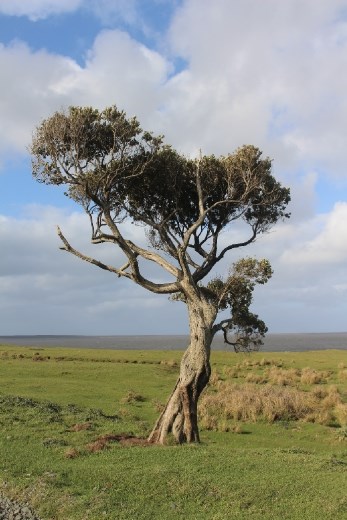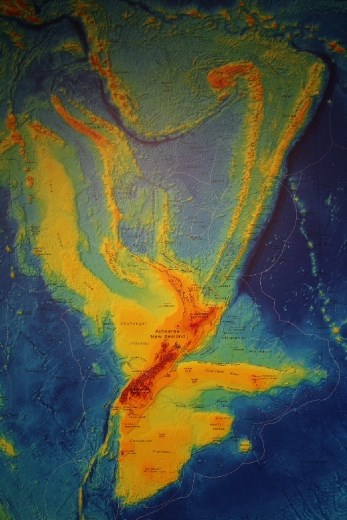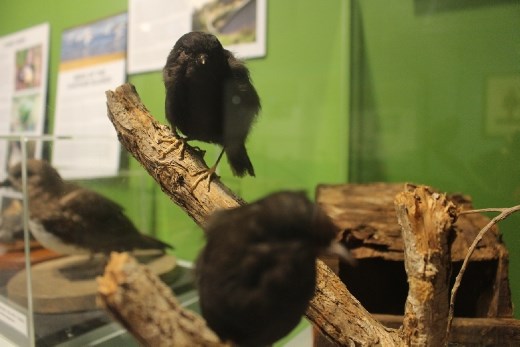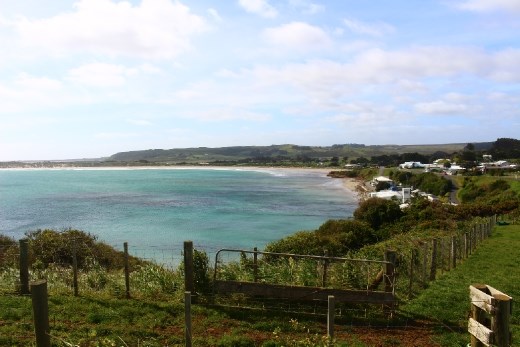Windswept, remote, desolate. Those are just three words that describe the Chatham Islands. Called "Rekohu" meaning "misty skies" by the Moriori, the Chatham Islands are the first inhabited place on Earth to see a new day. My friend Pete Fowler, who passed away about nine years ago, worked here as a weather reporter in the 1970s and told me "if you like remote places, you'll love the Chatham Islands." Just getting to the Chathams is an adventure. The Air Chathams check-in desk doesn't even open until one hour before departure, even though I was there three hours before, and was surprised when they weren't open an hour and a half prior to takeoff. The Saab-340 plane is small and the overhead compartments are barely big enough to put a laptop in. Like with many other remote places I stocked up on a sizeable amount of food, and there is an area among the back row where food, fish, etc. can be stored. I commented that it's like "summer camp on an airplane" where all bags are packed in the back. There are 34 seats but the plane only fills to half capacity since locals will bring back as much as they possibly can when the go to the mainland. Air Chathams is like a mixture of flying in the Falkland Islands and to Lord Howe Island. 45 minutes ahead of New Zealand time, we touched down safely on some of the world's remotest islands.
The Chatham Islands have been on my radar for a long time, and for many years I put off going to the Chathams due to the high cost of flights and accommodation but I'm staying with a lovely lady named Angie in her humble abode. She warned me beforehand that it's nothing flash but I think it's brilliant. The islands look small on a map but they are huge! With a population of about 600, everybody is very spread out. Waitangi is the main settlement, and there are two cafes, a post office, a police station, and a hospital. The island has only two schools and about three shops. The only proper restaurant is at Hotel Chathams. Only recently did the islands get mobile coverage.
Deep in the Roaring Forties, wind defines the islands...and the shape of the trees. They can look either like twirling ballerinas...

...or skinny headless women presenting flowers.

There are several islands in the Chatham group but only Chatham and Pitt Islands are inhabited. Yesterday, not long after landing, I walked around Nikau Reserve. The nikau palm is the world's most southerly palm tree species. Today I'd go with Angie into "town" (nobody calls it "Waitangi" just like how nobody on Norfolk refers to the town as "Burnt Pine.) and I'd go to the Chatham Islands Museum. Small but intriguing, there's a fair bit about the history and geology of the islands, but my favourite bit was the map of Zealandia.

Should I start telling people I've been to all eight continents? Zealandia is recognized as the world's 8th continent even though most of it is submerged. Consisting of New Zealand, New Caledonia, Norfolk Island, Lord Howe Island, and the Chatham Islands, I've now been to every major landmass on Zealandia. The Chatham black robin is critically endangered and one bird, named Old Blue, is credited with saving her species.

With the population of the black robin up to about 300, all of them live on protected islands southeast of Pitt Island. Outside of the museum, I couldn't ignore the islands' natural beauty and colour.

Good places come to those who wait. Beautiful this place is...

Just because the islands are remote doesn't mean there aren't any geocaches. Stopping at the the local DOC office I showed Angie an example of a geocache. A celebratory glass of wine awaited at Hotel Chathams, with a map of the islands on the wine glass. The pub will be open tomorrow, and I look forward to trying local fish and chips. From the mainland I brought stuff to make a roast lamb dinner. On a windy evening, there aren't many things better than a hot roast whilst sitting warm by a fire. I'll take that as my introduction to Rekohu.